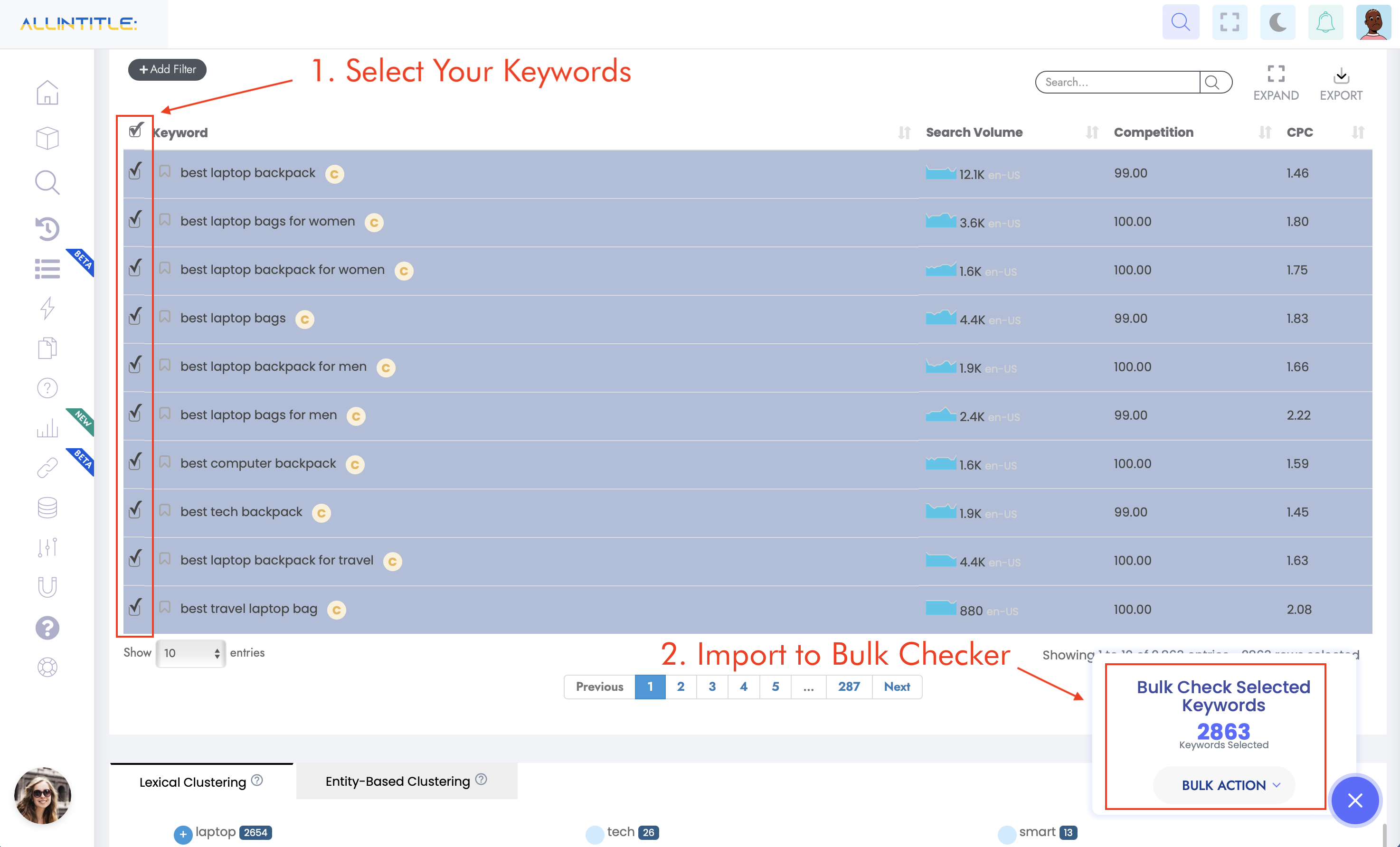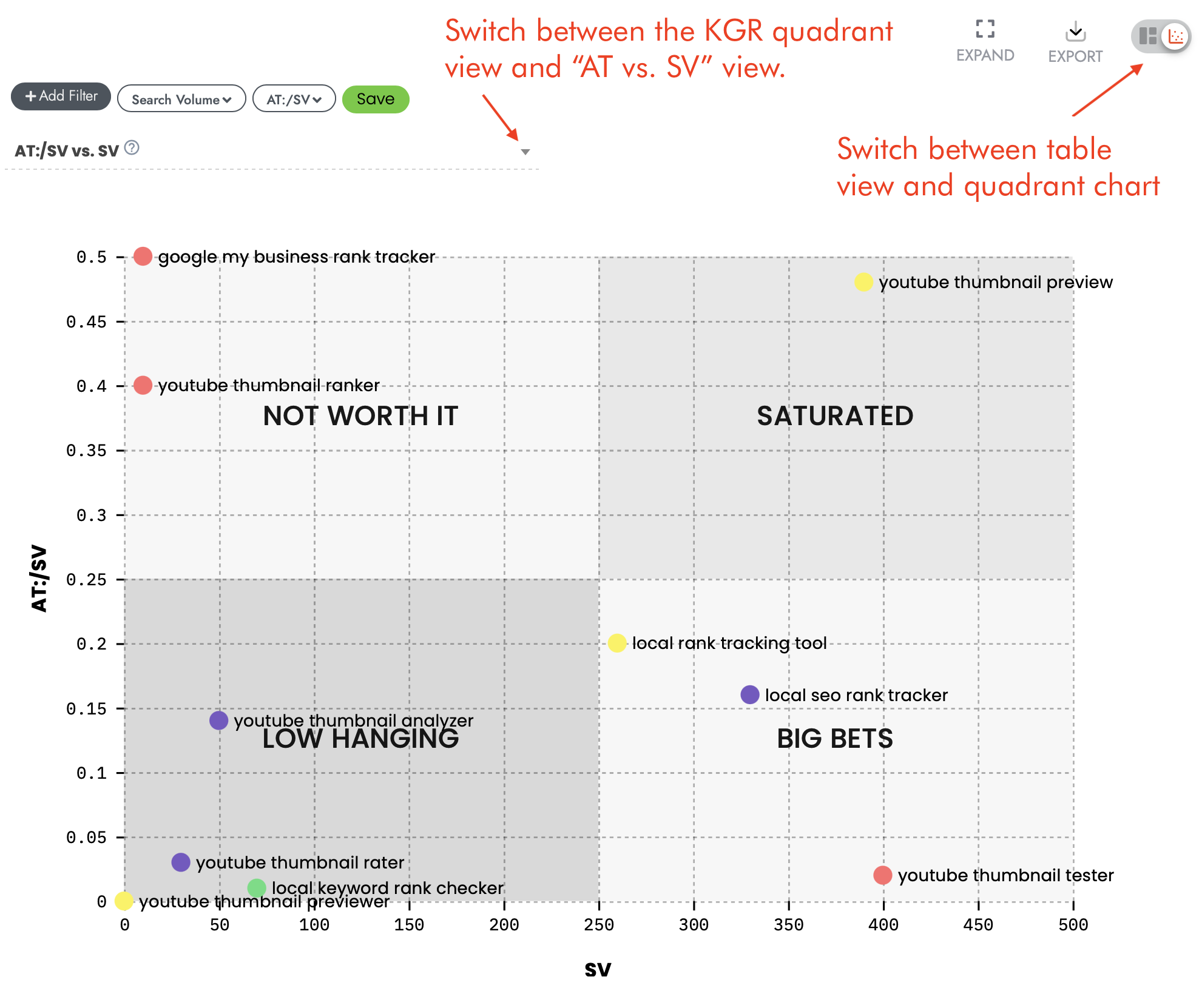
Keyword Golden Ratio (KGR) – More Than Quick Wins: A Competitive Edge with Lasting Results
Our entire world is internet-driven, meaning that unless you’re a local brick-and-mortar business, both your competition and your reach extend far beyond your area—it’s the entire world. This offers great opportunities but also presents significant challenges. While you can sell your product or services to clients anywhere, it becomes incredibly tough to make your business stand out from the pack, with everyone competing for those top 10 spots on Google. And if you’re a start-up, good luck competing with hundreds of well-established businesses that have been around for years. But what if there were a way to find and use under-utilized keywords—those low-hanging fruits—that could not only help you get found but also help you rank higher than giant competitors?
Keywords golden ratio (KGR) is the answer.
Doug Cunnington of Niche Site Project developed this data-driven method to find low-hanging fruit. It’s a simplified yet practical approach to evaluating keyword competitiveness, and the best part is that it actually works—helping you leap ahead of your competition.
Welcome to my ultimate blog post about the Keyword Golden Ratio. I’m Saeed Khosravi, an SEO practitioner since 2008, and the creator and mastermind behind Allintitle.co, the SEO tool designed to help you find those low-hanging keywords.
What is the Keyword Golden Ratio (KGR)?
KGR stands for Keyword Golden Ratio, and Keyword Golden Ratio is, in essence, a keyword research technique developed first by Doug Cunnington. It consists of a formula and a regimen to follow. Let’s first see what the KGR formula is. It’s not a super fancy, complex mathematical formula with several different variables, constants, coefficients, or exponents—it’s a simple ratio:
KGR = (“Allintitle” Results) divided by (Search Volume)
The KGR formula is simple: the number of Google results with the keyword phrase in the title tag, divided by the monthly search volume, where the search volume is less than 250. The search volume can be local, national, or international, depending on your target area.
- If the KGR for a keyword is less than 0.25, your site has a higher chance of ranking in the top 100 results.
- When the KGR is between 0.25 and 1, it’s a bit harder to rank, but still possible.
- If the KGR is greater than 1, it will be very difficult to rank for that keyword.

Keyword Golden Ratio Shortcomings
It’s important to understand where the Keyword Golden Ratio method may fall short:
- Not taking into account the strength of the competitors: KGR doesn’t account for the strength of the sites already ranking high on Google for a specific keyword. I would say this is by design, to reduce the complexity that comes with other keyword difficulty metrics (and a reason why it actually works). This simplicity can open the door to a hidden treasure box of long-tail keywords that aren’t targeted by many other sites—something that more complex keyword difficulty metrics might overlook.
- Over-relying on one ranking factor: The KGR’s overreliance on the importance of the title tag as a ranking factor can be seen as another shortcoming, but it enables the formula to provide a reasonably accurate estimate of competitiveness (no keyword difficulty measurement is perfect). It also offers a practical regimen for selecting low-hanging keywords that present real opportunities and actually work in the real world.
- Niche site targeting: The KGR method relies heavily on niche targeting, meaning that to succeed with it, you need to focus on a single niche and create content that explores it from many different angles. This means your site needs to already have a good amount of content related to that niche, or you’ll need to write dozens of articles targeting different KGR keywords within your niche to make it work.
- Won’t work without topical authority: Yes, you can’t just start from scratch and succeed with one article or a few poorly written ones just because you target a few KGR keywords. Your articles need to be genuinely high-quality, address the user’s search intent and you must build the topical authority required to be trusted and rewarded by Google’s algorithm.
But Why Does the KGR Method Actually Work?
Remember that Google’s algorithm is designed to find helpful content that fits the user’s search intent, even if there are only a few pieces of content that actually address that intent (unless you search for a meaningless random string of characters). So, no matter what the user searches for, Google still serves them a list of sites, which might not necessarily be directly targeting all the different ways people search for information. This means that if you find long-tail keywords that aren’t targeted by many other sites, and you’re an expert in that niche with established or growing topical authority, your content, provided that it’s a high-quality one, can be chosen by Google and served to the user—potentially outranking a giant competitor with high Domain Authority that only vaguely covers that specific long-tail keyword you found through the KGR method.
The beauty of the KGR method is that it can uncover in-demand long-tail terms that are underserved by assuming that keywords that appear in a title offer a strong ranking and competitive signal.
If done right, KGR helps create a solid foundation for long-lasting SEO success. By focusing on less competitive keywords and consistently applying the KGR strategy, you ensure that your site gains the topical authority needed for a lasting competitive edge, making it resilient to changes in search engine algorithms and market competition.
There are a few steps to help you find the right KGR keywords for your niche.
How To Find KGR Keywords
1- Build a keyword list by using Allintitle KW Explorer: First, you need to find long-tail keywords that are topical for your business. To do this, you can use the Allintitle Free KW Explorer. You give it a seed keyword, and it gives back hundreds of relevant search terms fetched in real-time from multiple different sources, from Google and Bing to Amazon, Quora, etc.

Calculate the KGR value, either manually or automatically, using a tool like Allintitle Bulk KGR Checker. Next, you’ll want to evaluate those keywords using the KGR formula. Here is how you can do it manually:
- Perform an “Allintitle” search on Google: Manually search to find the number of web pages with that keyword in the title.
- Obtain the search volume: Use a keyword research tool that allows you to upload keywords in bulk and retrieve their search volume.
- Select Keywords with low search volume: Focus on keywords with fewer than 250 monthly searches.
- Calculate The KGR: Use a spreadsheet to calculate the KGR value for the keywords selected in the previous step.
Getting Allintitle results manually from Google can take hours or even days. You will probably hit Google’s limit after a few dozen searches and will have to solve a CAPTCHA every time you search from then on. Also, Google has recently started to hide the number of results, so to reveal the number of Allintitle results, you need to click on the “tools” link to see the total number of results after each search.
Fortunately, this process has been automated using Allintitle Bulk KGR Checker. If you’re using the Allintitle Bulk Checker, you can skip all the above manual steps, as it provides precise, geo-specific search volume data and automatically calculates the KGR value for you. The only thing you need to do is import your keywords to Allintitle’s Bulk Checker, which you can do manually (copy-pasting your keywords to the bulk checker keywords field) or seamlessly right from the KW Explorer result page.
Directly Importing From KW Explorer: First, select the keywords you want to check for KGR and then click on the “import to bulk checker” button on the bottom right box as shown in the image below:

Manually Importing to Bulk Checker: Copy your keywords and paste them into our Bulk Checker interface. Then, click on import keywords, as shown in the image below. You can also click on the advanced settings to set the geographical and language information for your bulk import.

It can take a few minutes to process your keywords, but you don’t need to stay on this page and can leave the page and come back later to check the results.
3- Check results and select KGR keywords: Navigate to the Bulk Checker history page to check the results for the imported keywords and select the ones that show an AT:/SV (this is the KGR formula) less than 0.25. You can add one or several filters to filter the keywords table based on different criteria like KGR value, search volume value, etc.

As the number of monthly search results increases, the fixed ratio of 0.25 will determine if there are too many sites with matching title keywords to compete or not. It should be noted that 0.25 is just a rule of thumb, and depending on the competitiveness of your market and your website strength, you can adapt to a different threshold.
Extending KGR to Keywords with Greater Search Volume
You can also use the same concept for the keywords with more than 250 search volume. If a keyword has a much higher search volume than 250, but only appears on say 50 sites, that keyword may still be worth the effort to try to rank for.
The search volume of 250 is simply a threshold for evaluating a keyword’s demand, and while demand often correlates with competitiveness, it’s not the only indicator. A search volume greater than 250 does not necessarily mean a keyword is too competitive.
Always look at the number of sites that use the keyword in their title as well because even though search volume may appear quite high, if only a handful of sites are using that keyword in their titles, you may still be able to rank well for it.
Allintitle’s KGR Quadrant Chart
Allintitle’s Bulk Checker Quadrant chart can be a great tool to quickly map a list of keywords based on their competitiveness and potential for ranking. This chart, as can be seen in the image below, allows you to switch between two views using a dropdown menu.

In the default view, the chart plots the Allintitle/Search Volume (AT/SV) ratio against Search Volume (SV). This view directly aligns with the KGR formula, helping you identify keywords based on their competitiveness and potential for ranking. The chart is divided into four quadrants:
- Low Hanging: Keywords in this quadrant have a low AT/SV ratio (less than 0.25) and a manageable search volume (less than 250). This means they have fewer competing pages relative to their demand. These KGR keywords are ideal for targeting because they offer a high chance of ranking well with less competition.
- Big Bets: Keywords in this quadrant have a higher search volume but still maintain a relatively low AT/SV ratio. These represent more competitive keywords, but with the right strategy, they could yield significant rewards.
- Saturated: Keywords in this quadrant have both high search volumes and high AT/SV ratios. These are highly competitive and likely saturated with content, making them more challenging to rank for.
- Not Worth It: Keywords in this quadrant have low search volumes but relatively high AT/SV ratios, indicating high competition relative to the demand. These are typically not worth targeting due to the low payoff.
By switching to the second view, which plots Allintitle (AT) against Search Volume (SV), you can directly compare competitiveness (Allintitle) with demand (Search Volume) to spot keywords that might have higher search volumes but still show relatively low competition.
In this view, keywords in the “Low Hanging” quadrant indicate opportunities with a fair demand (search volume) but low competition (fewer pages using that keyword in their titles). This is particularly useful for finding higher-volume keywords that may still be worth targeting beyond the KGR search volume limits.
Keyword Golden Ratio is a tool that allows site owners and marketers to discover less competitive keywords. These keywords, despite their lower search volume, can rank faster.
The idea behind the Keyword Golden Ratio is to find the different phrases people use to search for the same thing. Longer and more specific keywords are more likely to rank higher.
KGR is especially beneficial to newer sites that have yet to become seen as authoritative. It can help even the newest business catapult above long-standing competition.
While KGR is known for delivering quick wins, its true power lies in its ability to establish lasting authority in your niche. By consistently targeting these under-utilized, well-researched keywords, your site not only ranks faster but also builds a strong, competitive presence over time, allowing you to maintain and even grow your rankings long after your initial success.

Saeed Khosravi is an SEO Strategist and Internet Marketing Specialist based in Montreal, QC. He is the founder and the driving force behind Allintitle.co, as well as several other successful SAAS platforms. Saeed earned his degree in MIB Marketing from HEC Montreal in 2018. He is also the founder and CEO of Nexunom, a digital marketing firm and SAAS holding company based in Montreal, QC. Initially launched as a simple KGR checker in 2019, Allintitle.co has evolved under Saeed's guidance into a comprehensive keyword research and SEO suite of tools. It is now trusted by over 15,000 users and continues to grow.



I always use the KGR for keyword research of my affiliate niche sites. I love it because it always works. You however need to create domain authority through backlinks if you are to truly see it working
I want to know if this KGR technic still working in 2021? when Google starts passage indexing.
It works but you can say 40% chances our keyword ranks.